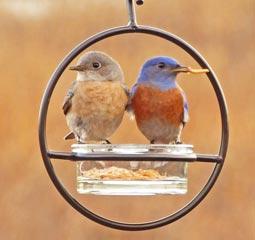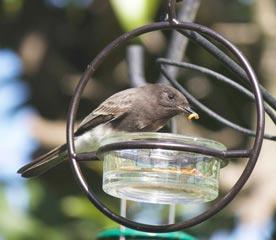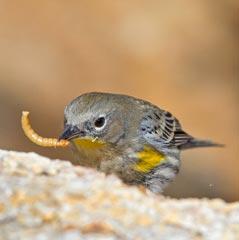Mealworms
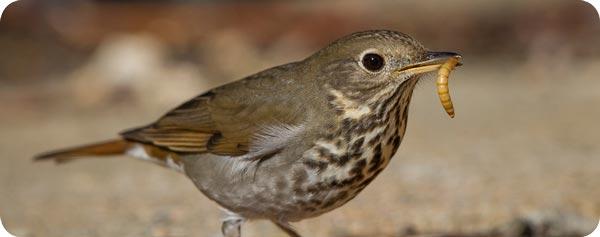
Hermit Thrush - Local photo by S. Hunt
Why offer mealworms?
Many birds eat insects as the major part of their natural diet and will rarely if ever visit seed feeders. Perhaps the most sought after among these insect-eaters are bluebirds (not to be confused with jays), but a variety of other uncommon feeder visitors may make occasional appearances, including warblers, robins, hermit thrushes, phoebes, and mockingbirds. Mealworms also appeal to many more common yard birds, including feeder regulars such as chickadees, titmice, scrub-jays, woodpeckers, nuthatches, and orioles. It can be very interesting to watch even common birds eating mealworms as they employ different feeding methods and behaviors than you might be used to seeing at a seed feeder.
During the nesting season (roughly March through August), mealworms are especially valuable as a source of protein for young nestlings; birds will visit mealworm feeders more frequently during this time of year when they naturally switch to a more insect-heavy diet. Live mealworms also are a valuable, moisture-rich food that helps to provide adequate water to adult and nestling birds during our dry summers.
|
Western bluebirds - local photo by Jack Gedney |
Black phoebe - local photo by Angela Casey |
How to do it
Offering mealworms is easy! No fancy feeder is required and a small cup of mealworms is very inexpensive. If you are using live mealworms, use a feeder with smooth sides so they can't escape; here are three options: |
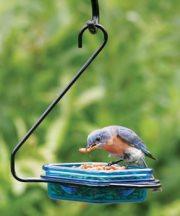 |
|
What are they?
The most important thing to most people is that the birds like to eat them. But if you want to know: mealworms are the larvae of the beetle Tenebrio molitor. They are not a true worm - nor are they slimy or smelly. The larval stage of the beetle typically lasts for 10 weeks. To maintain the larvae in a state of dormancy, mealworms can be kept in the refrigerator for several weeks without additional feeding. If you want to "plump up" your mealworms before offering them to birds, you can bring them to room temperature and give them a few slices of carrot, apple, or similar foods. If you will be using them with a week or so, you can keep your mealworms in their container at room temperature with a little bran (provided with all small container sizes). If you'd rather not deal with live mealworms, we also carry roasted mealworms. Although somewhat less attractive to birds and lacking the moisture content of their live counterparts, they are easy to store and can easily be mixed with seeds or other foods, and offered in feeders without fear of escape. |
Yellow-rumped warbler - S. Hunt |


